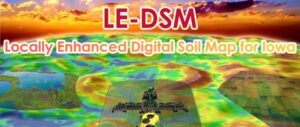Soil Science
Get advanced knowledge, skills, and techniques to address environmental and agricultural problems facing our global community. Students majoring in Soil Science will select one of the following areas of specialization:
- Chemistry
- Fertility
- Management
- Microbiology & Biochemistry
- Morphology & Genesis
- Physics
Learning Goals
Demonstrate
Demonstrate fundamental knowledge of soil components and soil processes.
Identify
Identify critical issues in fundamental and applied soil science and to formulate scientific approaches to those issues.
Apply
Ability to apply knowledge of soil science to solve problems in nonacademic contexts and in collaboration with professionals in other disciplines.
Communicate
Demonstrate professional communication skills, using effective strategies both when writing technical reports, research proposals, journal articles, or popular press articles and when giving oral or poster presentations to scientific or lay audiences.
Appreciate
Demonstrate an appreciation of the soil as a fundamental natural resource, deserving of wise use and protection.
Understand
Demonstrate an understanding of ethical issues that pertain to soil science and science in general.
Collaborate
Maintain, in collaboration with the faculty, an environment of discovery, professional pride, collaboration, and mutual support.
Soil Science Experts
Related Projects
- Comparison of Biofuel Systems (COBS)
- Colloid-Mediated Transport of Hormones with Land-Applied Manure
- Determining soil water evaporation and subsurface evaporation zones
- Improving cereal rye cover crop BMPs to increase adoption of cover crops by Iowa farmers (2018-2020)
- Soil Fertility Research
- Forecast and Assessment of Cropping sysTemS (FACTS; 2015-present)
Agricultural Meteorology
Agricultural Meteorology
The Agricultural Meteorology major integrates knowledge from a variety of scientific disciplines in order to determine how cropping systems are affected by weather and climate, and how cropping systems themselves affect weather and climate.
Learn MoreCrop Production & Physiology
Crop Production & Physiology
Become an expert in crop physiology, ecology, and management; forage quality and utilization; seed production and physiology; weed biology and control
Learn MorePlant Breeding
Plant Breeding
Plant Breeding is the genetic improvement of crop plants through the study and application of genetics, statistics, agronomy, plant pathology, entomology, and related sciences.
Learn MoreSoil Science
Soil Science
Explore the living and vast ecosystem under our feet. Soil science covers chemistry of the soil, fertility, management, microbiology and biochemistry, morphology and genesis as well as soil physics.
Learn More
















